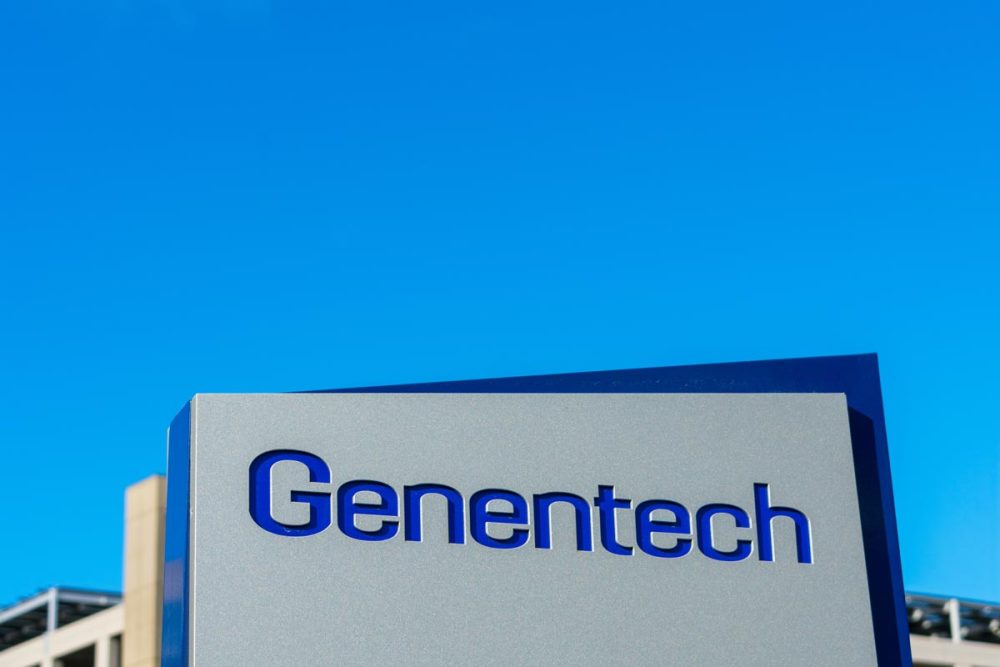Advertisment
New long-term data for Vabysmo show sustained retinal drying and vision improvements in retinal vein occlusion (RVO) – Genentech/Roche

Genentech, a member of the Roche Group announced new 72-week data from two global Phase III studies, BALATON and COMINO, evaluating Vabysmo (faricimab-svoa) in macular edema due to branch and central retinal vein occlusion (BRVO and CRVO).
Whereas available RVO treatments are typically given every one to two months, the data showed nearly 60% of people receiving Vabysmo in BALATON and up to 48% of people in COMINO were able to extend their treatment intervals to three or four months apart. In addition, patients in the studies maintained vision gains and robust retinal drying achieved in the first 24 weeks of the studies for more than one year. Retinal drying is an important clinical measure as swelling from excess fluid in the back of the eye has been associated with distorted and blurred vision. In both studies, Vabysmo was well tolerated and the safety profile was consistent with previous studies.
“This is the first time that vision and anatomical improvements have been maintained for more than a year in global Phase III studies for both branch and central retinal vein occlusion,” said Levi Garraway, M.D., Ph.D., Genentech’s chief medical officer and head of Global Product Development. “These long-term results build on the strong clinical and real-world data reinforcing Vabysmo as an effective treatment option for people affected by retinal conditions that can cause vision loss.”
Results will be presented virtually on February 3 at Angiogenesis, Exudation, and Degeneration 2024, organized by Bascom Palmer Eye Institute in Florida.
“The sustained vision improvements and retinal drying seen up to 72 weeks reaffirm Vabysmo as an effective treatment for retinal vein occlusion,” said Ramin Tadayoni, M.D., Ph.D., president of EURETINA and head of ophthalmology at the Lariboisiere Hospital in Paris, who is presenting the data at Angiogenesis. “More treatment options are needed to better serve people living with this condition, and these data show Vabysmo can potentially improve outcomes while reducing the number of clinic visits needed.”
Both studies evaluated the average change in best-corrected visual acuity (BCVA) score (the best distance vision a person can achieve – including with correction such as glasses – when reading letters on an eye chart) from baseline. The studies also tracked the amount of swelling in the back of the eye due to retinal fluid, as measured by central subfield thickness (CST). Reductions in CST indicate improvement. Overall, results showed the vision improvements and reductions in retinal fluid achieved in the first 24 weeks of the studies were maintained up to 72 weeks.
Results for BRVO (BALATON) : i. Vision gains: At 72 weeks, people receiving Vabysmo as a first-line treatment gained 18.1 letters on the eye chart, while people switched from aflibercept to Vabysmo gained 18.8 letters. During the first 24 weeks, vision gains were +16.8 eye chart letters in people receiving Vabysmo and +17.5 letters in people receiving aflibercept. ii. Retinal drying: At 72 weeks, people receiving Vabysmo as a first-line treatment saw a 310.9 µm reduction in retinal swelling, as measured by CST, while those switched from aflibercept to Vabysmo saw a reduction in CST of 307 µm. During the first 24 weeks of the study, CST reductions were 314.5 µm in people receiving Vabysmo and 307.6 µm in people receiving aflibercept.
Results for CRVO (COMINO) :i. Vision gains: People receiving Vabysmo as a first-line treatment gained 16.9 eye chart letters at 72 weeks, while people switched from aflibercept to Vabysmo gained 17.1 eye chart letters. During the first 24 weeks of the study, vision gains were +16.9 eye chart letters in people receiving Vabysmo and +17.3 letters in people receiving aflibercept. ii. Retinal drying: People receiving Vabysmo as a first-line treatment saw a 465.9 µm reduction in retinal swelling, as measured by CST, while those switched from aflibercept to Vabysmo saw a reduction in CST of 460.6 µm at 72 weeks. During the first 24 weeks of the study, reductions in CST were 462.3 µm in people receiving Vabysmo and 447.8 µm in people receiving aflibercept.
Vabysmo is the first and only bispecific antibody approved for the eye. It targets and inhibits two disease pathways linked to a number of vision-threatening retinal conditions by neutralizing angiopoietin-2 (Ang-2) and vascular endothelial growth factor-A (VEGF-A). While research is underway to better understand the role of the Ang-2 pathway in retinal disease, Ang-2 and VEGF-A are thought to contribute to vision loss by destabilizing blood vessels, which may cause new leaky blood vessels to form and increase inflammation. By blocking pathways involving Ang-2 and VEGF-A, Vabysmo is designed to stabilize blood vessels.
To date, Vabysmo is approved in more than 90 countries around the world for people living with wet age-related macular degeneration and diabetic macular edema, with more than 2.5 million doses distributed globally. In October 2023, the FDA approved Vabysmo for the treatment of macular edema following RVO.
About the BALATON and COMINO Studies : BALATON (NCT04740905) and COMINO (NCT04740931) are two randomized, multicenter, double-masked, global Phase III studies evaluating the efficacy and safety of Vabysmo (faricimab-svoa) compared to aflibercept. For the first 20 weeks, patients were randomized 1:1 to receive monthly injections for six months of either Vabysmo (6.0 mg) or aflibercept (2.0 mg). From weeks 24 to 72, all patients received Vabysmo (6.0 mg) up to every four months, using a treat-and-extend dosing regimen. The BALATON study was conducted in 553 people with branch retinal vein occlusion. The COMINO study was conducted in 729 people with central retinal or hemiretinal vein occlusion. The primary endpoint of each study was the change in best-corrected visual acuity from baseline at 24 weeks. Secondary endpoints (weeks 0-24) included change in central subfield thickness and drying of retinal fluid, from baseline over time up to week 24. Secondary endpoints (weeks 24-72) assessed change in BCVA from baseline, change in CST from baseline and the proportion of individuals on treat-and-extend intervals.





